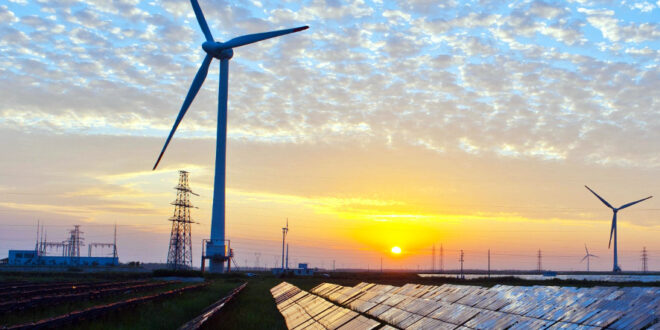Indonesia, a country that continues to be heavily dependent on coal, has just announced a major investment in a renewable energy plan, marking an important shift. The funding comes from global lenders and is expected to spur greater investment in Indonesia’s renewable energy sector, as well as support decarbonisation. However, the Asian country will require significantly more funding in the coming decades if it hopes to undergo a meaningful transformation.
This month, the Indonesian government announced a new investment plan that will provide $20 billion in funding from global lenders to develop its renewable energy resources. The Comprehensive Investment and Policy Plan (CIPP) is led by the United States and Japan. Indonesia’s Just Energy Transition Partnership (JETP) outlines the aim of cutting grid emissions to 250 million metric tonnes of CO2 by 2030, compared to the previous estimate of over 350 million.
Using the funding to support decarbonisation aims, Indonesia now hopes to increase the contribution of renewable energy to the total energy mix to 44 percent by 2030, from just 12 percent in 2022. Erick Thohir, the ad-interim chief minister for investment affairs, stated, “We have to move quickly because 2030 is less than seven years away. The partnership must be enhanced and accelerated to do the priority projects, including to immediately realise the financing commitments.”
Indonesia continues to rely heavily on coal, with around 60 percent of the country’s electricity coming from the fossil fuel. While much of the world is moving away from coal, in favour of less-polluting natural gas or renewable alternatives, Indonesia is one of several Asian countries that expects to continue to use coal for years to come. Indonesia is the world’s largest exporter of coal for electricity, having built more coal plants than it knows what to do with in recent decades due to misguided national energy demand projections.
Before discussions of the CIPP commenced, Indonesia’s President Joko Widodo committed to stop constructing new coal plants. However, the CIPP includes an exemption to building new coal plants if they are already in the pipeline or attached to national development projects. This potential loophole could allow Indonesia to continue expanding its coal capacity while claiming to support a green transition.
In September, Indonesia’s state utility, Perusahaan Listrik Negara (PLN), said the country would require around $172 billion in funding by 2040 for renewable energy projects and improvements to the grid to add 60GW of new renewable capacity. This includes a $5 billion investment for developing a smart grid, which would support the delivery of variable green energy such as wind and solar power. PLN is aiming to add 32GW of new capacity as a base load, as well as construct new grids to connect an additional 28 GW of renewable power as a variable load.
Evy Haryadi, the director of PLN, explained, “There is no transition without transmission. That is the first challenge, how we transmit power from the fairly remote location to the demand.” Meanwhile, the CEO of the company, Darmawan Prasodjo, stated, “With this accelerated renewable energy development, 75 percent of our additional generation capacity will be based on renewables and 25 percent will be gas-based.”
While the $20 billion in funding is unlikely to contribute to a complete transformation of Indonesia’s energy sector, it is expected to help the Southeast Asian state get on the road to decarbonisation and attract more funding to the sector. However, some have criticised the CIPP for providing market-rate loans rather than special financing schemes, which will lead to high costs for Indonesia and could deter other countries from accepting similar deals in the future.
In October 2022, the International Renewable Energy Agency (IRENA) published its Indonesia Energy Transition Outlook to encourage investors to finance the country’s green transition. It suggested that because Indonesia is the highest energy consumer among the Member States of the Association of Southeast Asian Nations (ASEAN) it is key to the global energy transition, particularly as its economy and population are expected to grow significantly over the next few decades. Indonesia has a wide supply of renewable resources and the opportunity to tap into its green potential so long as it can attract higher levels of funding.
The CIPP is expected to provide Indonesia with the initial funding needed to kick-start its green transformation. The Southeast Asian country has an abundant supply of renewable resources and the potential to become a major supplier of clean energy in the region. However, to achieve this, the government must follow through on its pledge to halt the construction of any new coal plants in favour of green alternatives.

 Iran Energy News Oil, Gas, Petrochemical and Energy Field Specialized Channel
Iran Energy News Oil, Gas, Petrochemical and Energy Field Specialized Channel



